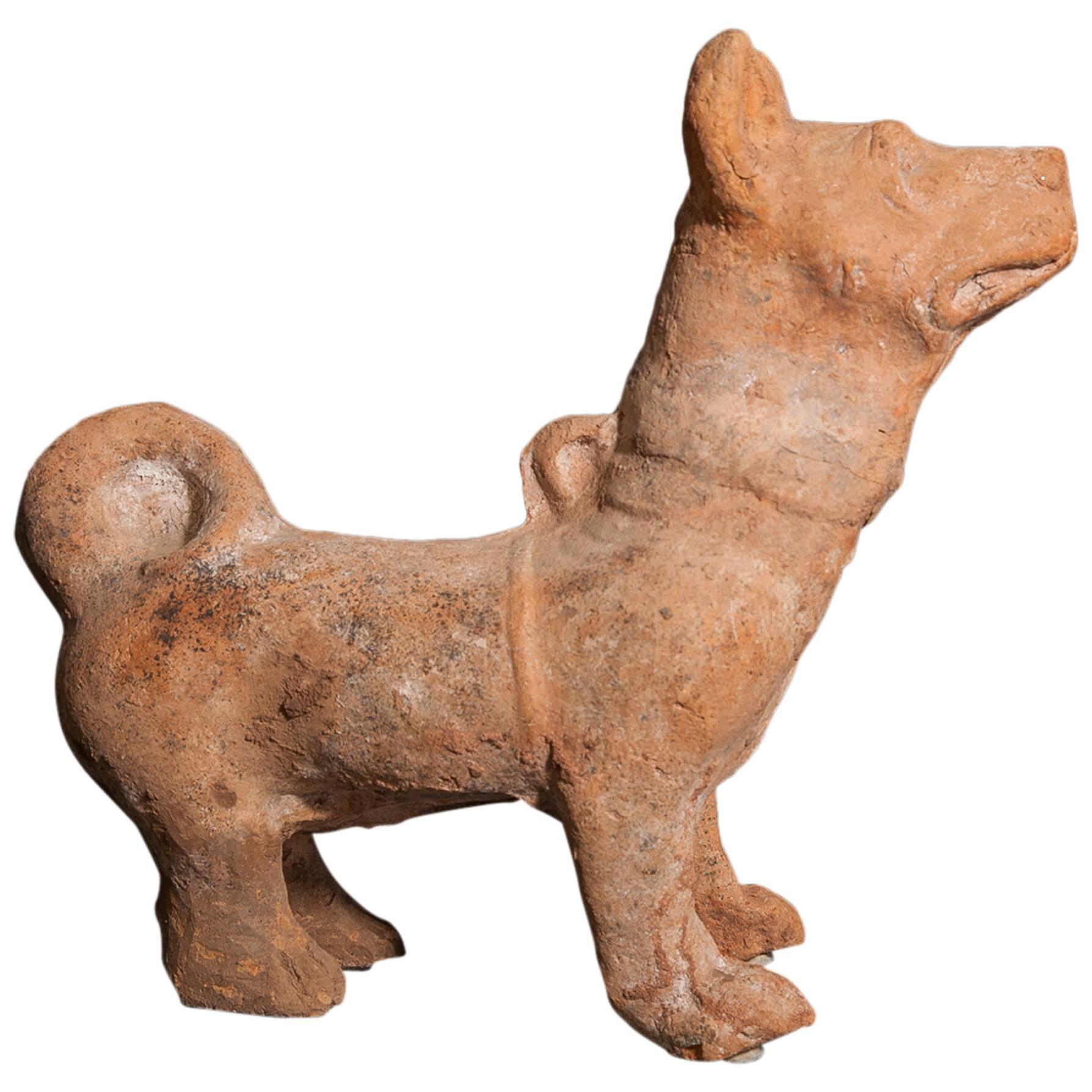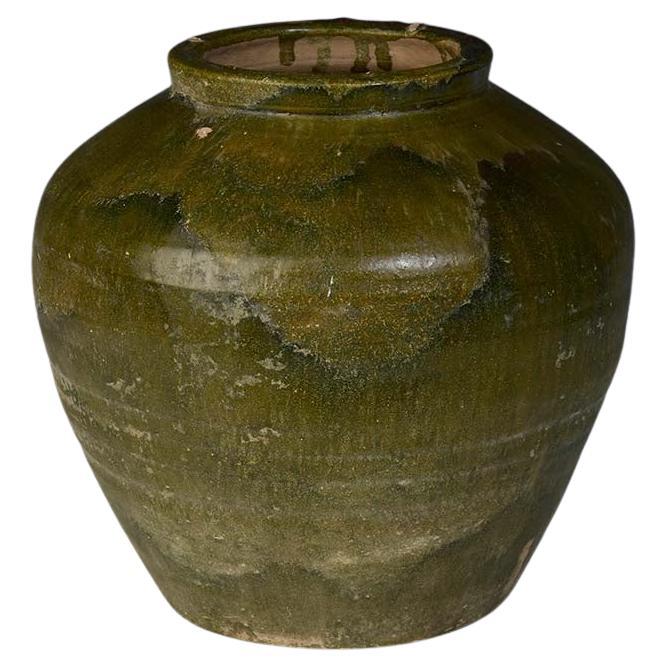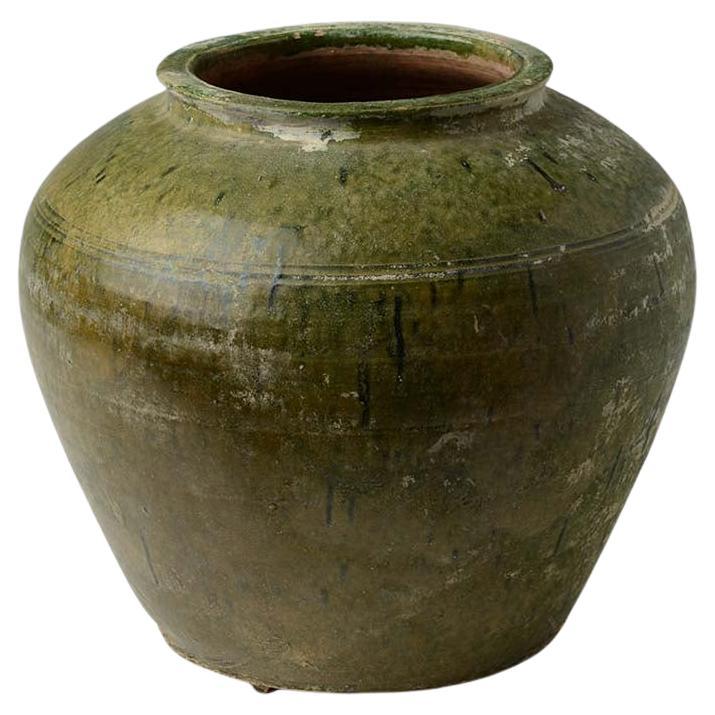Items Similar to Han Dynasty Standing Horse Trainer “Palafrenieri”
Want more images or videos?
Request additional images or videos from the seller
1 of 11
Han Dynasty Standing Horse Trainer “Palafrenieri”
About the Item
Huge hollow molded terracotta, standing male figure wearing a hip-length multi-layered robe with a collared neck. Implements suspended from his waist, holding a staff in his right hand and wearing a disc type cap. Some earthen encrustation on surface with traces of red and white painted pigments. Professionally repaired from several original pieces with restoration over the break lines.Han Dynasty, China. 206 BCE-220 CE. Custom metal base. Private Florida collection, purchased in England in mid 1980s.
- Dimensions:Height: 35 in (88.9 cm)Width: 12 in (30.48 cm)Depth: 8 in (20.32 cm)
- Style:Han (Of the Period)
- Materials and Techniques:
- Period:
- Date of Manufacture:206BC - 220AD
- Condition:
- Seller Location:San Pedro Garza Garcia, MX
- Reference Number:
About the Seller
3.7
Vetted Seller
These experienced sellers undergo a comprehensive evaluation by our team of in-house experts.
1stDibs seller since 2017
22 sales on 1stDibs
Typical response time: 18 hours
- ShippingRetrieving quote...Ships From: San Pedro Garza Garcia, Mexico
- Return PolicyA return for this item may be initiated within 3 days of delivery.
More From This SellerView All
- Monumental Han Dynasty Terracotta Horse - TL Tested - China, '206 BC–220 AD'Located in San Pedro Garza Garcia, Nuevo LeonA massive pottery horse with separately made head and tail, standing on all fours and striding with its right hoof forward. Extended snout ends in parted lips showing teeth beneath i...Category
Antique 15th Century and Earlier Chinese Han Antiquities
MaterialsTerracotta
- Tang Dynasty Expressive Imperial Court Singer - TL TestedLocated in San Pedro Garza Garcia, Nuevo LeonVery expressive Imperial Court singer dressed in elegant ceremonial robes with long sleeves and hands in motion. Gray terracotta. Thermoluminescense Test by Ralph Kotalla Lab NE: 05K091003 (Worldwide oldest private laboratory specialized in TL testing...Category
Antique 15th Century and Earlier Tang Antiquities
- Impressive Terracotta Funerary Procession - Ming Dynasty, China '1368-1644 AD'Located in San Pedro Garza Garcia, Nuevo LeonImpressive Funeral Ensamble of 10 Terracotta Glazed Figures in green and caramel colors depicting a votive procession with a palanquin, his four carriers, a horse, a stableman, two musicians, and an offering carrier. This ensemble is accompanied by a Certificate of Authenticity, and Certificate of Expertise by Jean-Yves Nathan - Specialist in Asian Arts for the CEDEA (The European Confederation of Art Experts). Burial figurines of graceful dancers, mystical beasts, and everyday objects reveal both how people in early China approached death and how they lived. Since people viewed the afterlife as an extension of worldly life, these figurines, called mingqi, sometimes referred as “spirit utensils” or “vessels of ghosts” disclose details of routine existence and provide insights into belief systems over a thousand-year period. The Ming dynasty was the ruling dynasty of China – then known as the Empire of the Great Ming – for 276 years (1368–1644 AD). Founded by Chu Yuan-chang, the rebel leader that was successful in removing the mongols from the throne. Chinese control was re-asserted in China and eastern Asia. Literature became more important, schools were created, and the justice system was reformed. The Ming dynasty is described by some as "one of the greatest eras of orderly government and social stability in human history,” was the last imperial dynasty in China ruled by ethnic Han Chinese. The practice of burying ceramic objects with the deceased went into decline from the 10th to the 14th Century AD. There was a revival in placing miniature representations of glazed terracotta objects such a furniture, food offerings, horses, miniature statues...Category
Antique 15th Century and Earlier Chinese Ming Antiquities
MaterialsTerracotta
- Superb Set of 5 Elegant Court Attendants, Ming Dynasty, 1368-1644 AD TL TestedLocated in San Pedro Garza Garcia, Nuevo LeonA stunning set of 5 graceful terracotta figurines from the Ming Dynasty '1368-1644' AD. These elegant attendants are standing on a yellow glazed lotus flower over a high hexagonal green plinth and wear fine robes in matching green and yellow glazes. The unglazed areas have pigmented colors in red, black and white. Each is carrying essential offerings for the royal family. The head is detachable as often seen on the larger figures from this period. Meticulously detailed facial expressions have been hand-painted. Condition: Mint, finely preserved glaze and pigment, undamaged and no repairs. Provenance: Ex. Danish Collection. This set is guaranteed authentic and comes with a Certificate of Authenticity and TL Test from Laboratory Kotalla in Germany (The Oldest Thermoluminescence Testing Laboratory in the World). Dimensions: Average 54 H cms Burial figurines of graceful dancers, mystical beasts, and everyday objects reveal both how people in early China approached death and how they lived. Since people viewed the afterlife as an extension of worldly life, these figurines, called mingqi, sometimes referred as “spirit utensils” or “vessels of ghosts” disclose details of routine existence and provide insights into belief systems over a thousand-year period. The Ming dynasty was the ruling dynasty of China – then known as the Empire of the Great Ming – for 276 years (1368–1644 AD). Founded by Chu Yuan-chang, the rebel leader that was successful in removing the mongols from the throne. Chinese control was re-asserted in China and eastern Asia. Literature became more important, schools were created, and the justice system was reformed. The Ming dynasty is described by some as "one of the greatest eras of orderly government and social stability in human history,” was the last imperial dynasty in China ruled by ethnic Han Chinese. The practice of burying ceramic objects with the deceased went into decline from the 10th to the 14th Century AD. There was a revival in placing miniature representations of glazed terracotta objects such a furniture, food offerings, horses, miniature statues...Category
Antique 15th Century and Earlier Chinese Ming Antiquities
MaterialsTerracotta
- Stunning Terracotta Standing Horse, Tang Dynasty, China '618-907 AD', TL TestLocated in San Pedro Garza Garcia, Nuevo LeonMagnificent standing horse in orange terracotta and traces of painting. With a finely decorated saddle and with the mane and tail hair braided. TL Test by Ralph Kotalla Lab NE: 09K12...Category
Antique 15th Century and Earlier Chinese Tang Antiquities
MaterialsTerracotta
- Elegant Han Dynasty Terracotta Warrior - China '206 BC - 220 AD'Located in San Pedro Garza Garcia, Nuevo LeonImpressive terracotta warrior representing a banner bearer gripping a wooden staff with his hands (dematerialized through the ages); his gaze is ser...Category
Antique 15th Century and Earlier Chinese Han Antiquities
MaterialsTerracotta
You May Also Like
- Chinese Han Dynasty Terracotta Fighting DogLocated in Hudson, NYChinese Han Dynasty Terracotta Fighting Dog. During the Han Dynasty (206 BC to 220 AD), terracotta dogs were placed at a grave site in order to protec...Category
Antique 15th Century and Earlier Chinese Han Ceramics
MaterialsTerracotta
- Chinese Cocoon Jar, Burnished Gray Pottery, Western Han Dynasty, ChinaLocated in Austin, TXA classic Chinese Han Dynasty "cocoon jar" of high fired burnished gray pottery, Western Han Dynasty (206 BC - 9 AD), China. The jar of typical form, w...Category
Antique 15th Century and Earlier Chinese Han Antiquities
MaterialsPottery
- Group of Three Chinese Han Dynasty Style Gray Pottery Granary ModelsLocated in Austin, TXAn attractive group of three high fired gray pottery models of granaries, Han dynasty (206 BC-220 AD) style, and most likely of the period, China. The granary models of varying cy...Category
Antique 15th Century and Earlier Chinese Han Antiquities
MaterialsPottery
- Han Dynasty, Antique Chinese Pottery Granary JarLocated in Sampantawong, THChinese pottery granary jar, with cylindrical shape, decorated with bands of incised lines, and supported by three legs. Age: China, Han Dynasty, 206 B.C. - A.D. 220 Size: heigh...Category
Antique 15th Century and Earlier Chinese Antiquities
MaterialsPottery
- Han Dynasty, Antique Chinese Green Glazed Pottery JarLocated in Sampantawong, THChinese green glazed pottery jar. Lead glaze with copper is the main colorant used in Han period to produce green glaze. Greenware became popular during the Eastern Han...Category
Antique 15th Century and Earlier Chinese Antiquities
MaterialsPottery
- Han Dynasty, Antique Chinese Green Glazed Pottery JarLocated in Sampantawong, THChinese green glazed pottery jar in globular form with plain decoration. Lead glaze with copper is the main colorant used in Han period ...Category
Antique 15th Century and Earlier Chinese Antiquities
MaterialsPottery





